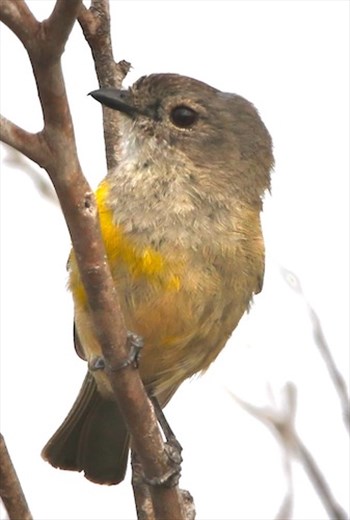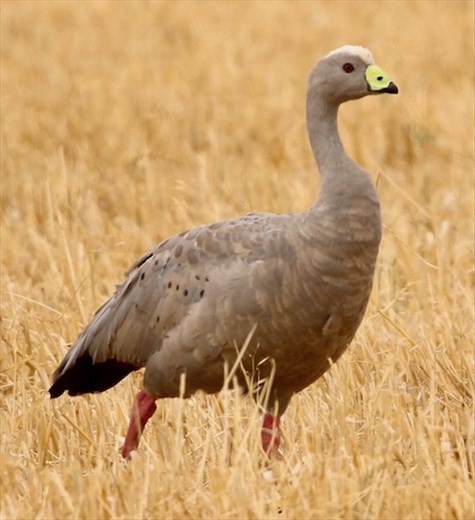UNLIKE WELL-MANNERED CHILDREN some birds prefer to be heard and not seen. This is especially true for the Western Whipbird, one of Australia’s rarest. We spent two chilly mornings hiking around Lincoln National Park alternately playing the call and listening for a reply.

There's a chill in the air, Lincoln NP
They spend most of their time near the ground, foraging for insects but had I realized that a pair of Whipbirds maintains a territory of ten to twenty hectares, I would have been less optimistic of seeing one—that’s only two birds in 25 acres!

Close, but no Cigar—Rufous Whistler (juv)

Horsfield's Bronze Cuckoo, Lincoln NP
Nevertheless, Connie is pretty sure she heard a female reply to her recorded call. John and his artilleryman’s ears isn’t quite onboard. We did manage fleeting glimpses of a couple of Spotted Grass-wrens, a very good look at a male Rufous Whistler (plus shots of a juvenile) and nice photos of Horsfield’s Bronze Cuckoo.

Portuguese Millipede explosion after the shower

A feast for Elegant Parrots, Lincoln National Park
The wee bit of rain last night appears to have brought out thousands upon thousands of millipedes—not any old millipede but Portuguese Millipedes. Only a Jain, those super-devout Buddhists who sweep the ground ahead so they don’t inadvertently squish any critters, could walk without stepping on dozens. The ground-feeding Elegant Parrots were out in droves snacking on millipedes to their hearts’ content.

Cape Barren Goose
We also got good photos of Cape Barren Geese. They are one of the rarest goose species worldwide but common on the offshore islands near Tasmania and South Australia and on the mainland in extreme South Australia.